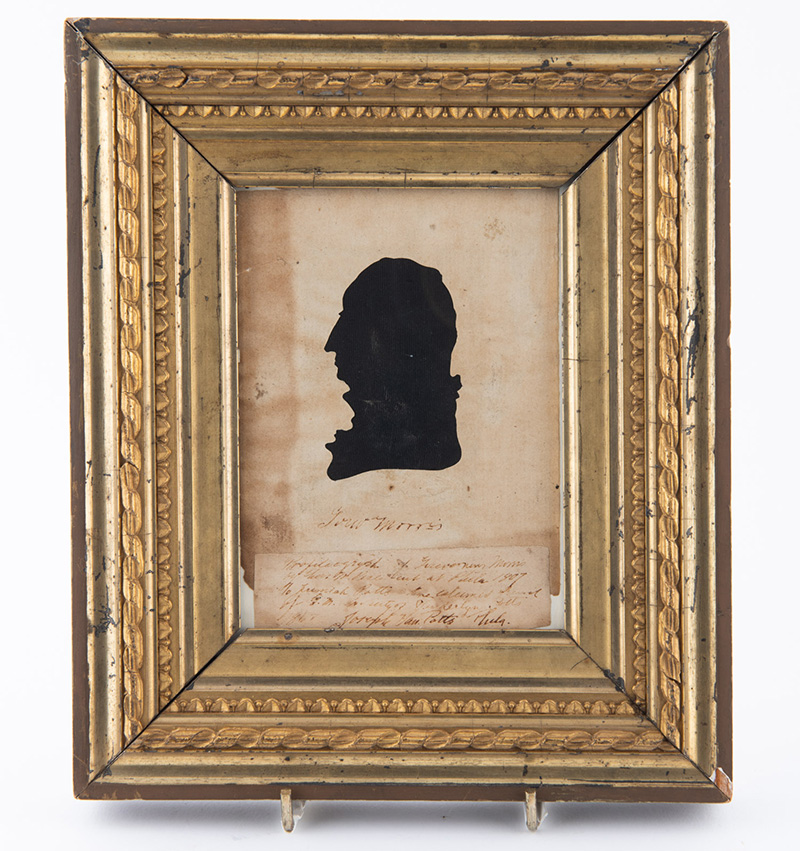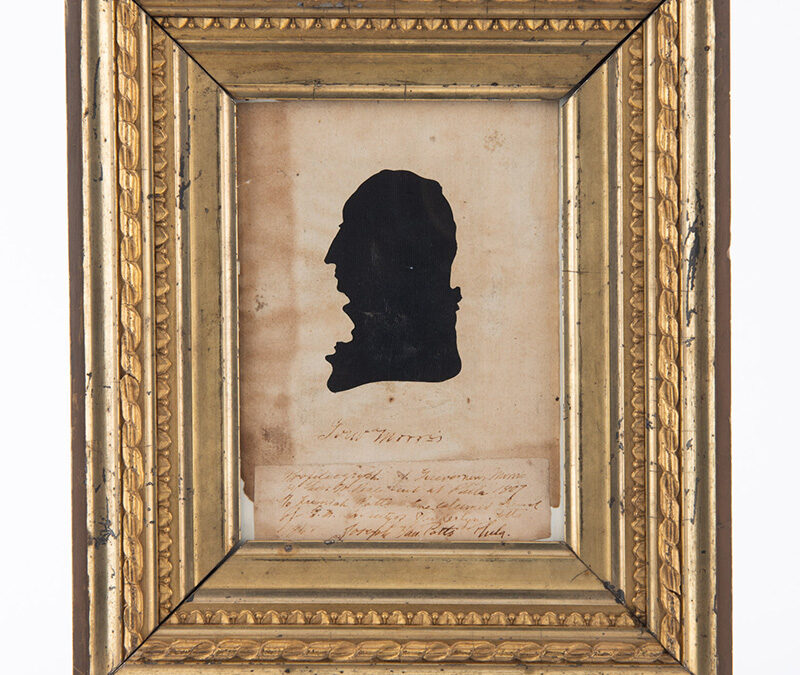Silhouette of Gouverneur Morris

| Maker | Attributed to Moses Williams (Philadelphia, 1777-c. 1825) |
| Date of Creation | c. 1802 |
| Location | Philadelphia, Pennsylvania |
| Materials | Silk, paper |
| Institution | The Preservation Society of Newport County |
| Credit Line | Bequest of Mrs. Alletta Morris McBean |
| Accession Number | PSNC.8626 |
| Photo Credit | The Preservation Society of Newport County |
This silhouette made from hollow-cut paper on black silk grosgrain depicts the profile of aging statesman Gouverneur Morris (1752–1816), a member of the Continental Congress and signer of the Articles of Confederation. Descendants of Morris summered at Chepstow in Newport, RI and bequeathed Chepstow with its contents, including the silhouette, to the Preservation Society in 1986. An embossed stamp beneath the profile indicates it was cut at “PEALE’S MUSEUM” in Philadelphia. A clipping affixed to the bottom in 1867 reads: “Profileograph of Gouverneur Morris by Chas. W. Peale at Phila 1807. To Jeremiah Potts the esteemed friend of G.M. Property of Vanderlyn Potts 1867. Joseph Van. Potts Phila.” The invented term “profileograph” likens the indexical qualities of the cut profile with the later invention of photography. Formerly attributed to Charles Willson Peale (1741–1827), this silhouette was likely cut at Peale’s Philadelphia Museum instead by Moses Williams (1777–c. 1825), an African American man long enslaved by the Peale family. Williams cut thousands of portrait heads in the Museum. Peale’s son Rembrandt recalled that Williams cut “the likenesses of many a valued friend or relative, and sometimes of distinguished personages” like Morris. Williams used a mechanical device known as a physiognotrace to trace the sitter’s profile onto a folded piece of paper, which he then cut out by hand. Williams’ silhouettes sold for eight cents each. Williams’ work was so profitable to Peale that Peale granted Williams his freedom in 1802. Williams continued to work at the museum after that date. Previously dated to 1807, the profile was likely completed instead on May 14, 1802, when Morris recorded a visit to Peale’s Museum in his diaries. It is unknown if Williams was emancipated by that date. It is fascinating to imagine what may have transpired during the meeting between Morris and Williams, when one of the era’s staunchest opponents of slavery sat for a talented African American artist either recently freed or on the cusp of gaining his freedom.

